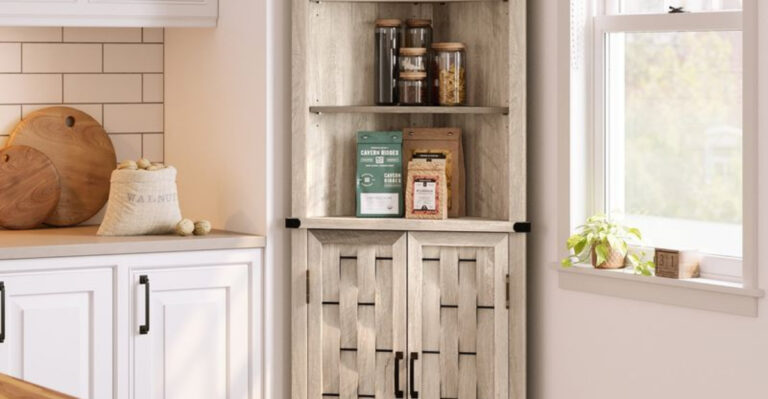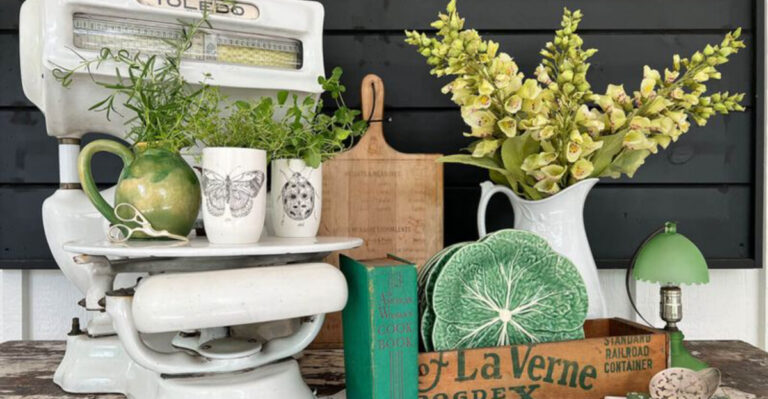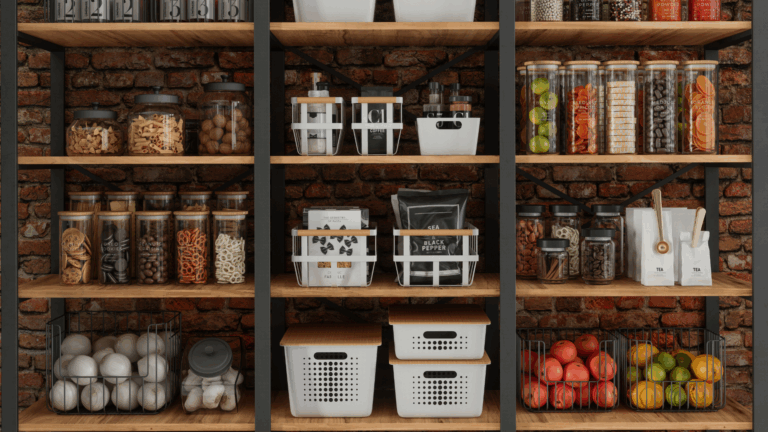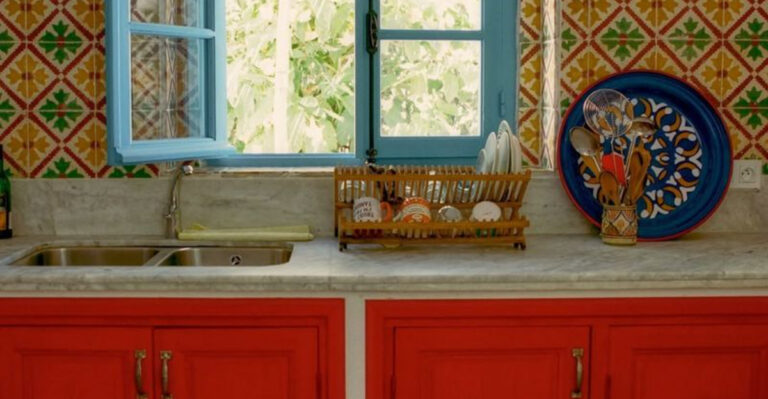10 Things Interior Designers Say You Don’t Need In Your Kitchen And 10 Features To Replace Them
Kitchens have evolved dramatically over the years, with trends coming and going faster than you can say ‘farmhouse sink.’ Professional interior designers constantly evaluate which features truly enhance functionality versus those that just waste space or look dated.
Ready to transform your kitchen from cluttered to streamlined? Here’s what the experts recommend removing and what to install instead for a more practical, beautiful cooking space.
1. Ditch: Over-the-range microwaves
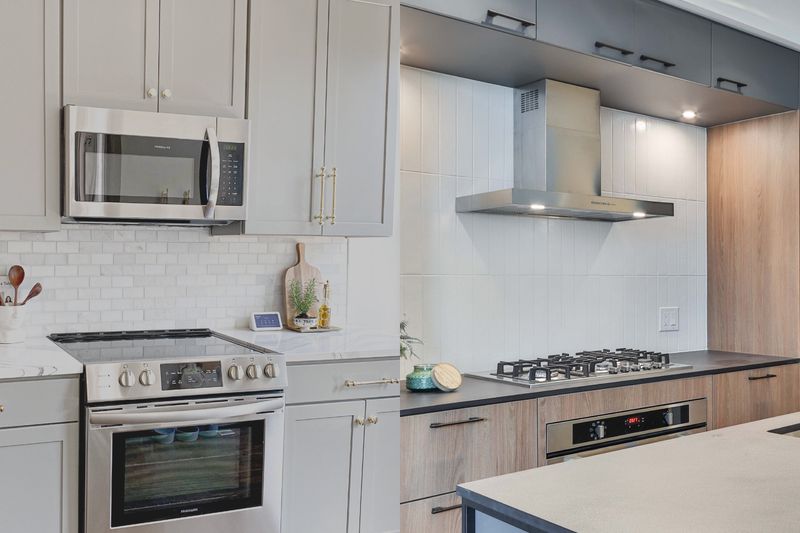
Remember when having a microwave above your stove was the height of convenience? Not anymore! Professional designers now consider this placement outdated and impractical.
Short cooks may struggle to reach items safely, and the location traps cooking steam and grease in your appliance. Plus, these bulky units often interrupt sightlines and make your kitchen feel smaller than it actually is.
2. Replace with: Under-counter microwave drawers
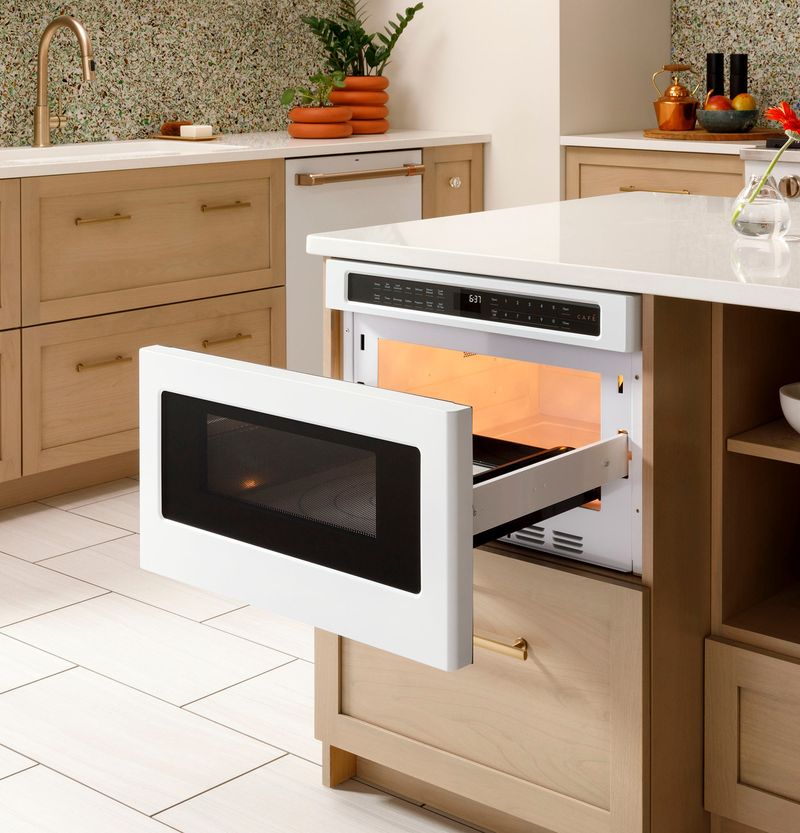
Sleek and hidden from immediate view, microwave drawers represent the modern solution to heating leftovers without sacrificing style. Imagine simply pushing a button and watching your drawer slide open effortlessly.
Kids can access them more safely, and you’ll free up valuable eye-level space. Many models feature child locks and seamlessly integrate with cabinetry for that high-end, uncluttered look that designers adore.
3. Ditch: Pot racks hanging from the ceiling
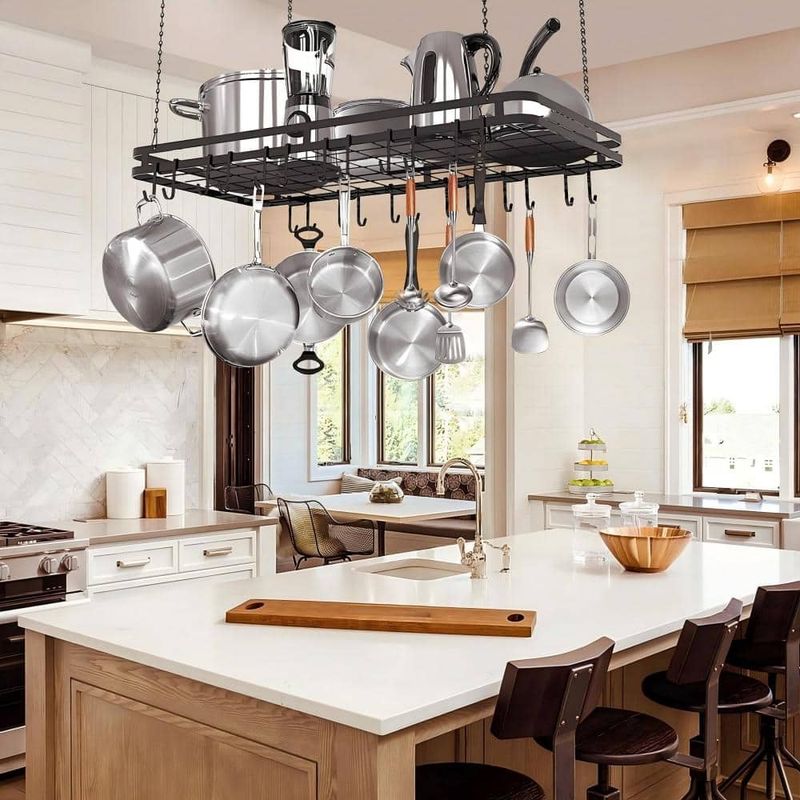
While once considered a chef-inspired statement piece, ceiling pot racks have fallen out of favor with today’s top designers. Anyone who’s ever had to dust greasy pots knows why!
Suspended cookware collects dust and kitchen grease that’s difficult to clean. For shorter individuals, reaching up for heavy pots creates a genuine safety hazard. Additionally, dangling pots interrupt sightlines and make spaces feel cluttered and chaotic.
4. Replace with: Hidden pull-out storage for pots and pans
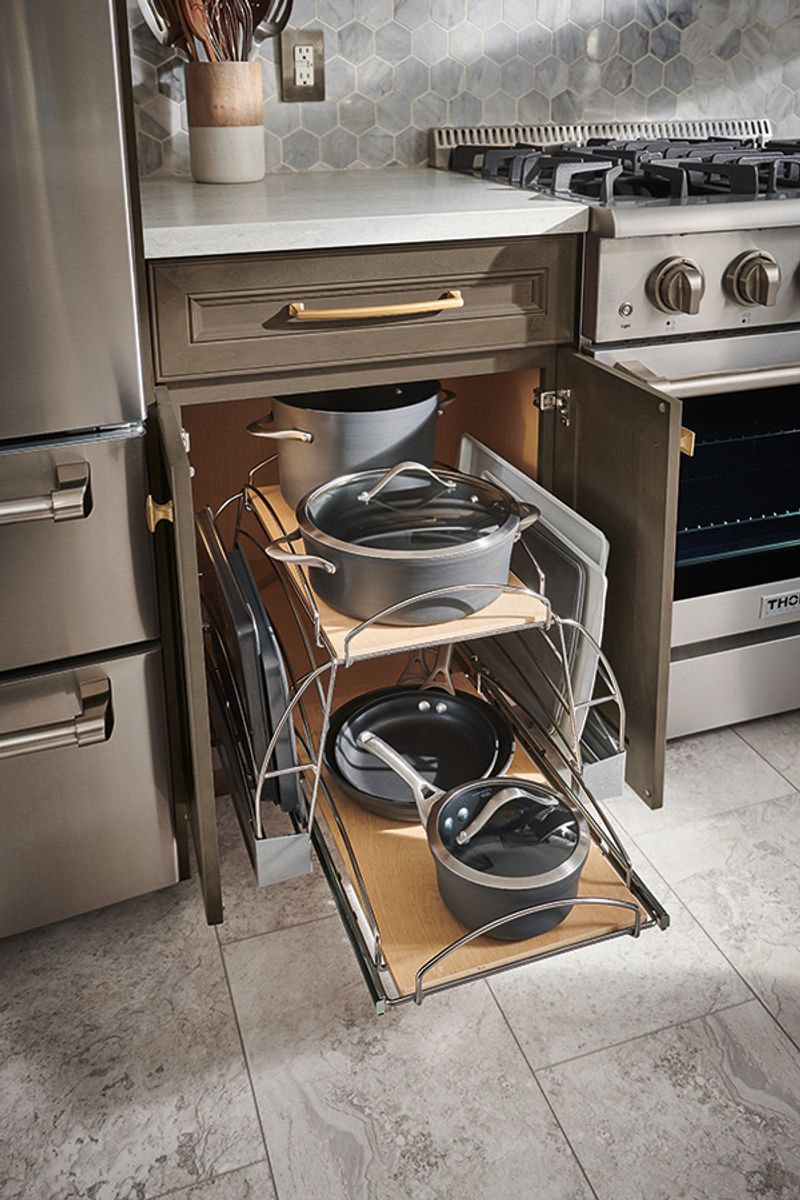
Imagine opening a drawer to find every pot and pan perfectly organized, with no bending or reaching required! Smart pull-out storage systems transform chaotic cabinets into functional masterpieces.
Deep drawers with customizable dividers keep everything in its place while protecting your cookware from dust. Some systems even include specialized racks for lids – solving that age-old kitchen organization nightmare once and for all.
5. Ditch: Double kitchen islands
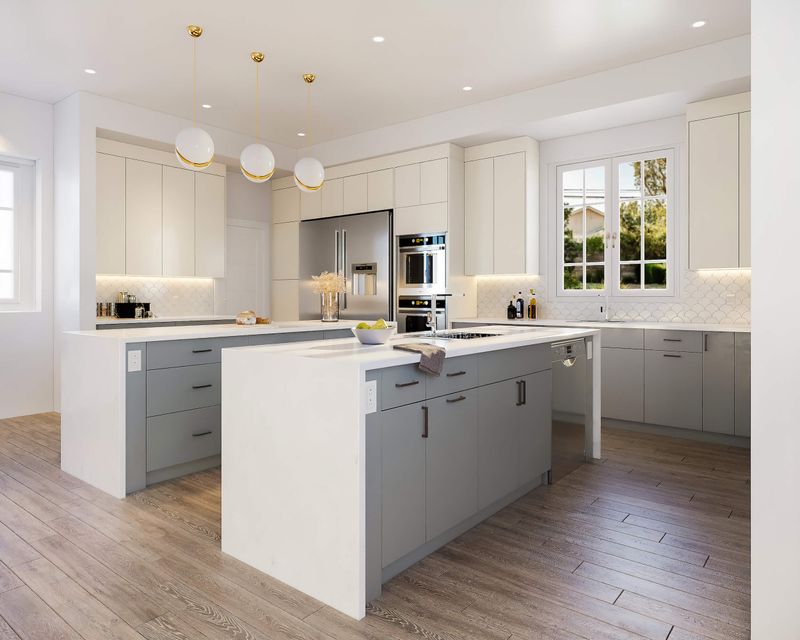
Having two islands might seem like the ultimate luxury, but designers increasingly view this as impractical excess. Unless you’re running a cooking school, dual islands often create awkward traffic patterns.
Moving between them requires extra steps, wasting valuable energy during meal prep. Many homeowners discover that the second island becomes a catch-all for clutter rather than a functional workspace, ultimately defeating its purpose.
6. Replace with: One large multifunctional island
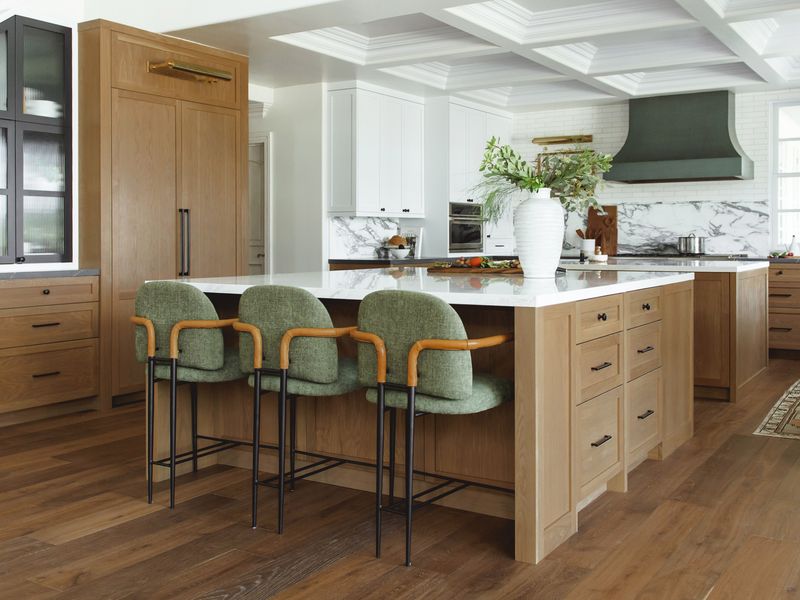
Quality trumps quantity when it comes to kitchen islands! A single, well-designed island can incorporate multiple zones for specific tasks while maintaining efficient workflow.
Consider including a prep sink at one end, casual seating at another, and perhaps a section with varying counter heights. Smart storage beneath can house everything from recycling bins to specialized cooking equipment, maximizing every inch without sacrificing style.
7. Ditch: Ornate cabinet moldings

Goodbye, dust-collecting scrollwork and fussy cabinet details! Intricate moldings might look impressive initially, but they’re falling out of favor with modern designers for good reason.
Cleaning those detailed crevices becomes a nightmare as cooking grease and dust accumulate. Beyond maintenance headaches, these ornate elements often make kitchens feel dated and overly formal. Most importantly, they add significant cost without improving functionality.
8. Replace with: Clean, flat cabinet panels
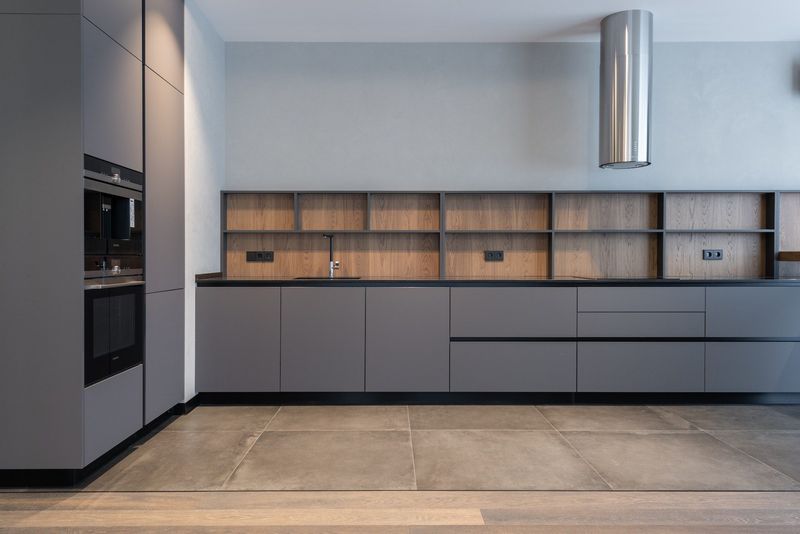
Minimalist cabinet fronts offer timeless appeal that won’t look dated five years from now. Smooth surfaces create a sense of calm in busy kitchens while dramatically reducing cleaning time.
Without ornate details to distract the eye, the focus shifts to quality materials and thoughtful design. Flat panels also provide the perfect backdrop for statement hardware – allowing you to update your kitchen’s look easily by simply swapping out knobs and pulls.
9. Ditch: Open shelving everywhere
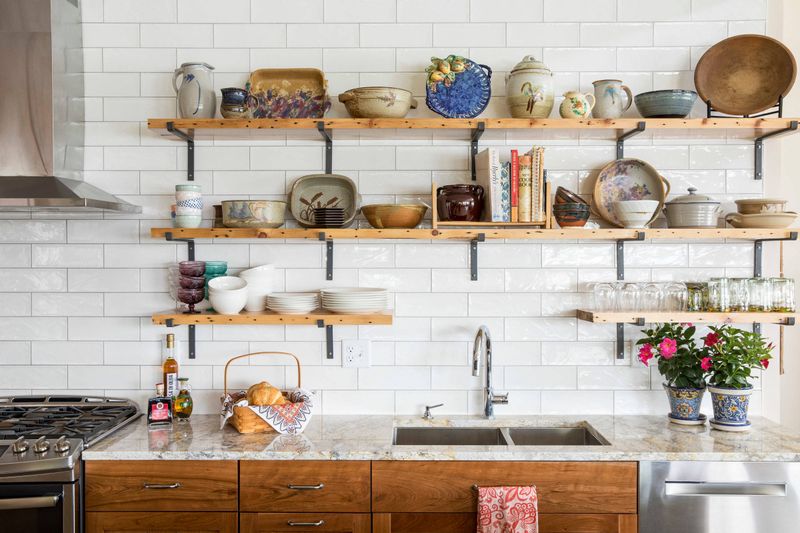
Instagram may have convinced you that displaying every dish is chic, but designers are pulling back from this impractical trend. Unless you’re extraordinarily neat, open shelving quickly becomes visual chaos.
Everyday items often collect dust and cooking grease, requiring frequent washing even when unused. It’s common to carefully curate “display dishes” while hiding actual everyday plates elsewhere—creating unnecessary double storage.
10. Replace with: A mix of closed cabinets and limited open display
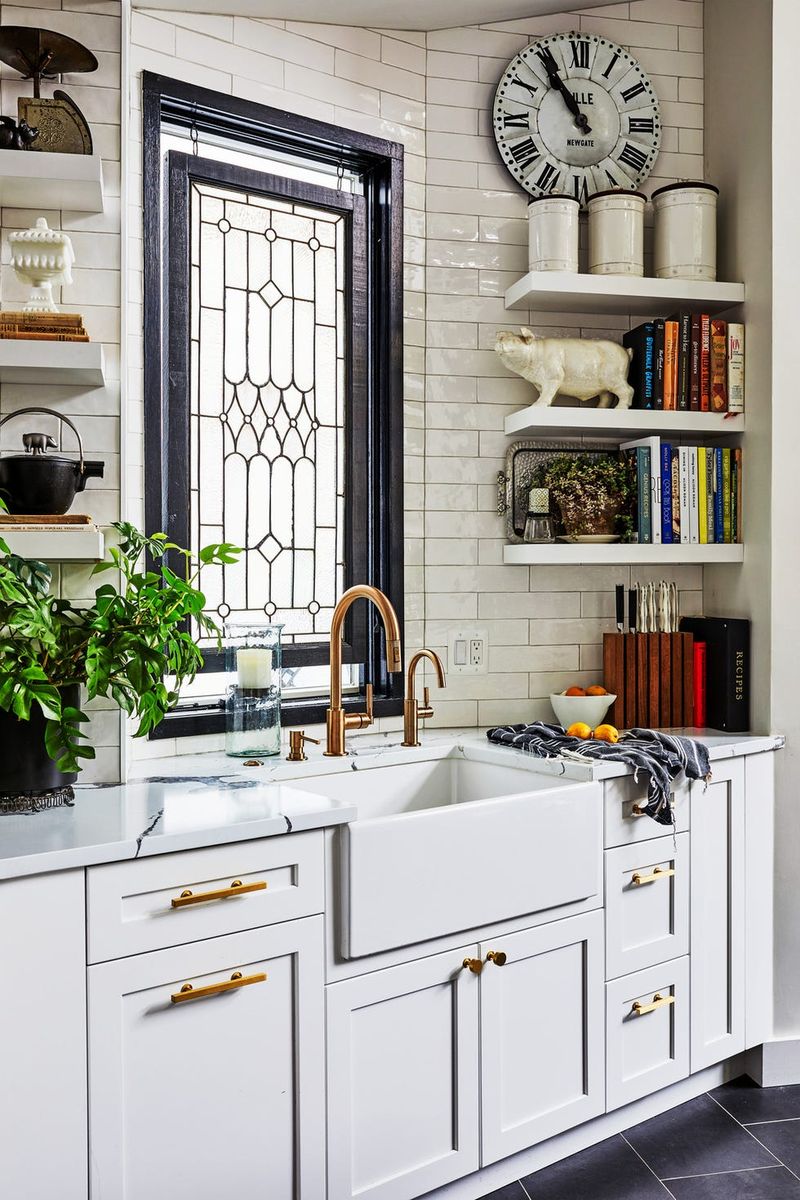
Reserving just one or two areas for open shelving creates visual interest without overwhelming maintenance. Consider displaying only your most beautiful pieces – perhaps colorful serving bowls or a curated collection.
Keep everyday essentials behind closed doors where they stay clean and dust-free. This strategic approach gives you the best of both worlds: the warm, personalized feel of displayed items plus the practicality of hidden storage.
11. Ditch: Faux-distressed finishes
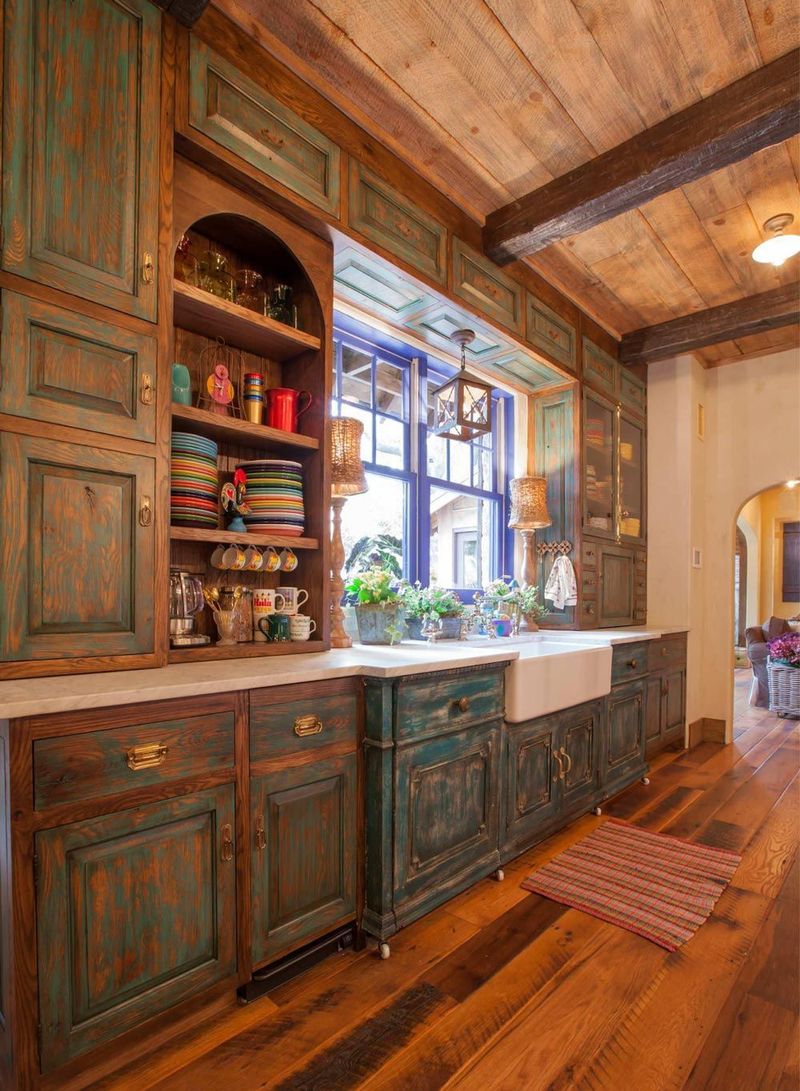
Artificially weathered cabinets that were never actually old are quickly becoming design relics themselves. What once seemed charmingly rustic now reads as contrived and dated to discerning eyes.
Manufacturing processes often create unrealistic patterns that don’t mimic genuine wear. The fabricated “farmhouse” look tends to lose appeal faster than authentic styles. Additionally, repairs become nearly impossible to blend seamlessly when damage occurs.
12. Replace with: Smooth matte or satin finishes
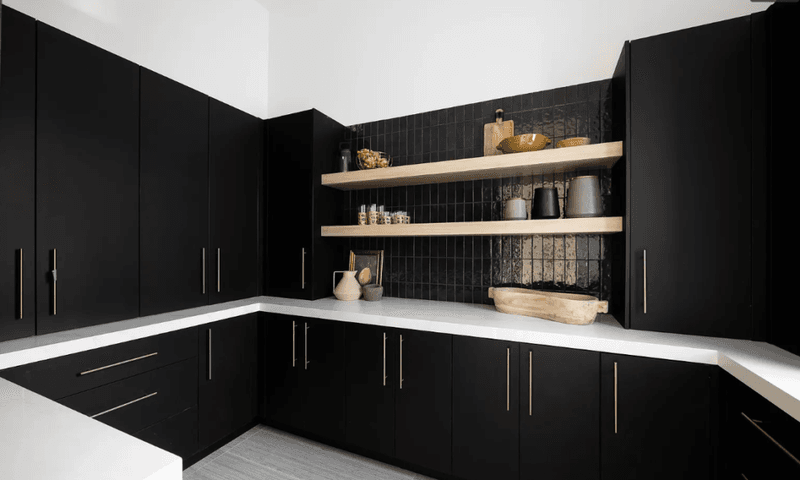
Sophistication comes from simplicity with today’s preferred cabinet finishes. Matte surfaces offer understated elegance while hiding fingerprints better than glossy alternatives – perfect for busy family kitchens!
Gentle satin sheens provide just enough light reflection without becoming a cleaning burden. Natural wood tones are making a strong comeback, but with smooth, refined surfaces rather than artificial distressing. For painted cabinets, subtle texture appears through quality brushwork rather than manufactured “aging.”
13. Ditch: Built-in desk nooks
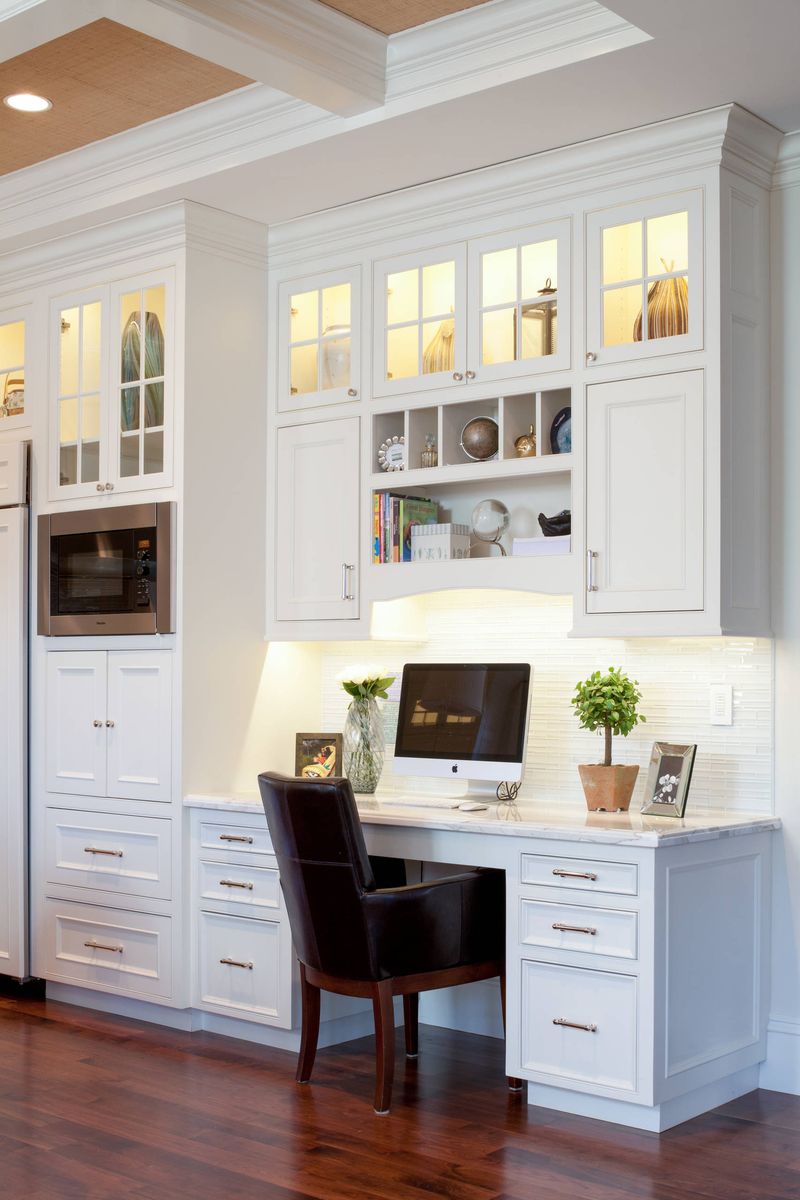
Once considered essential for family organization, those tiny kitchen desk areas have become obsolete in our laptop-and-smartphone era. Who wants to sit with their back to all the kitchen action?
The awkward dimensions rarely accommodate modern computing needs, and the location subjects electronics to cooking steam, grease, and food splatter.
14. Replace with: Extra pantry or tall cabinetry
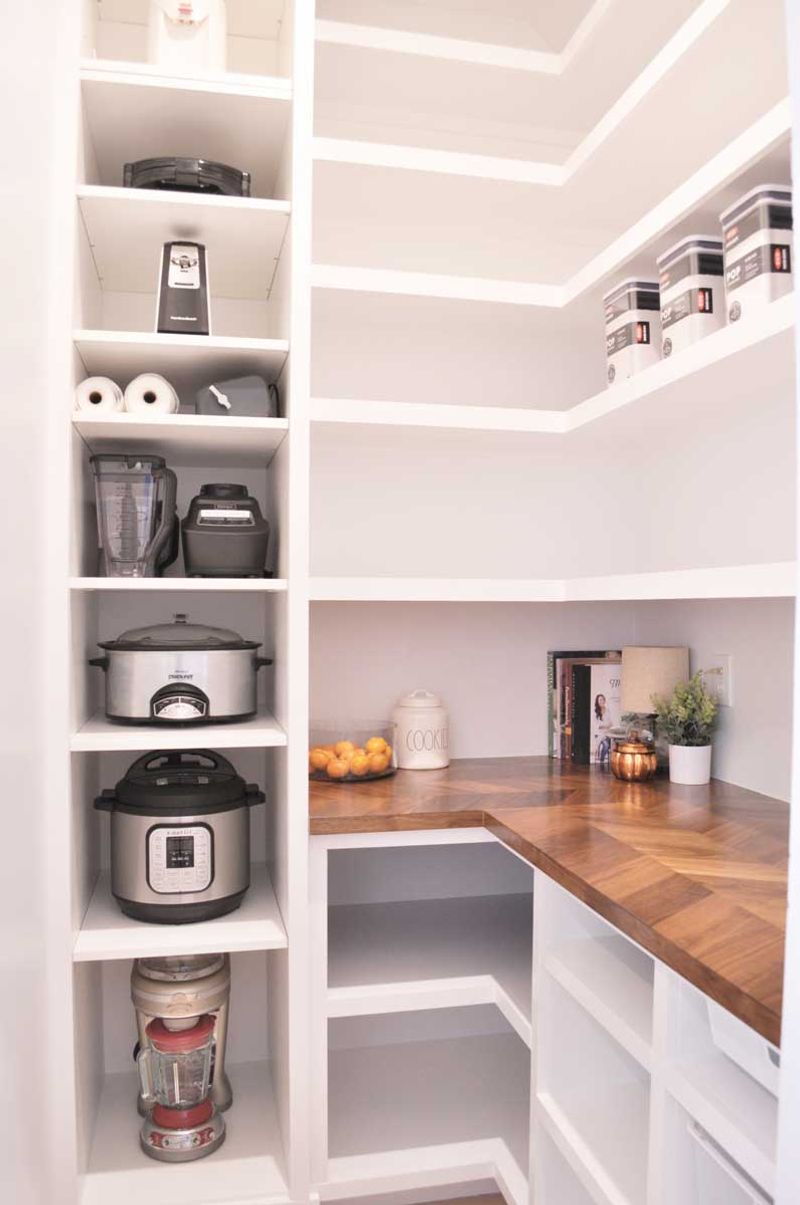
Converting that wasted desk space into floor-to-ceiling storage dramatically increases your kitchen’s functionality. Imagine having a dedicated home for rarely-used appliances or bulk purchases!
Pull-out shelves make everything accessible, even in deep cabinets. Some homeowners create specialized zones for baking supplies or coffee stations in this reclaimed space. The vertical storage maximizes square footage without expanding your kitchen’s footprint.
15. Ditch: Glass-front cabinets everywhere

Showcasing every mismatched mug and plastic sippy cup wasn’t what designers had in mind when recommending glass cabinets! Too many transparent doors create visual clutter and maintenance headaches.
Fingerprints and dust show prominently on glass surfaces, requiring frequent cleaning. For most families, this creates unnecessary stress rather than enjoyable design.
16. Replace with: Textured wood or reeded cabinet doors
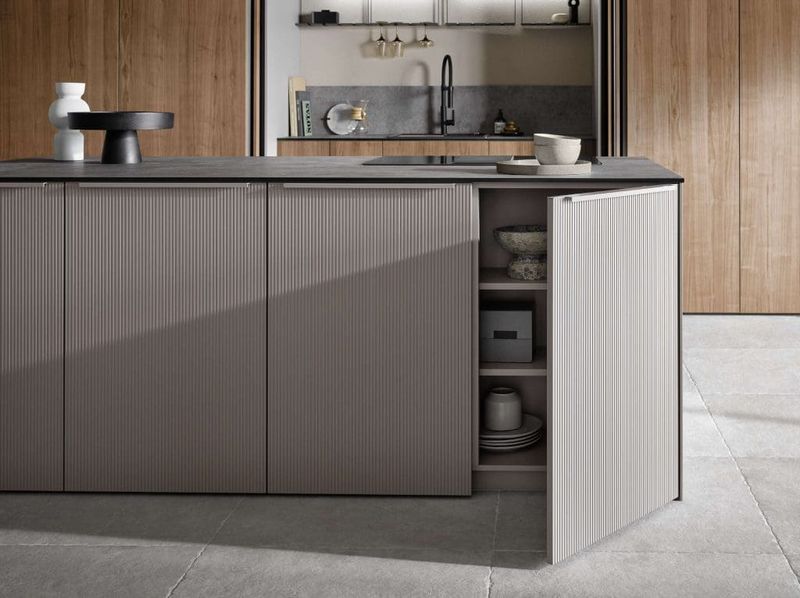
Adding dimension through tactile surfaces creates interest without transparency’s maintenance burden. Vertical wood slats (reeding) offer architectural detail while concealing cabinet contents.
Fluted panels or subtle wood grain bring natural warmth to contemporary kitchens. Unlike glass, these textured surfaces hide fingerprints and minor imperfections beautifully. The result feels custom and high-end without requiring constant attention to what’s stored inside.
17. Ditch: Appliance garages
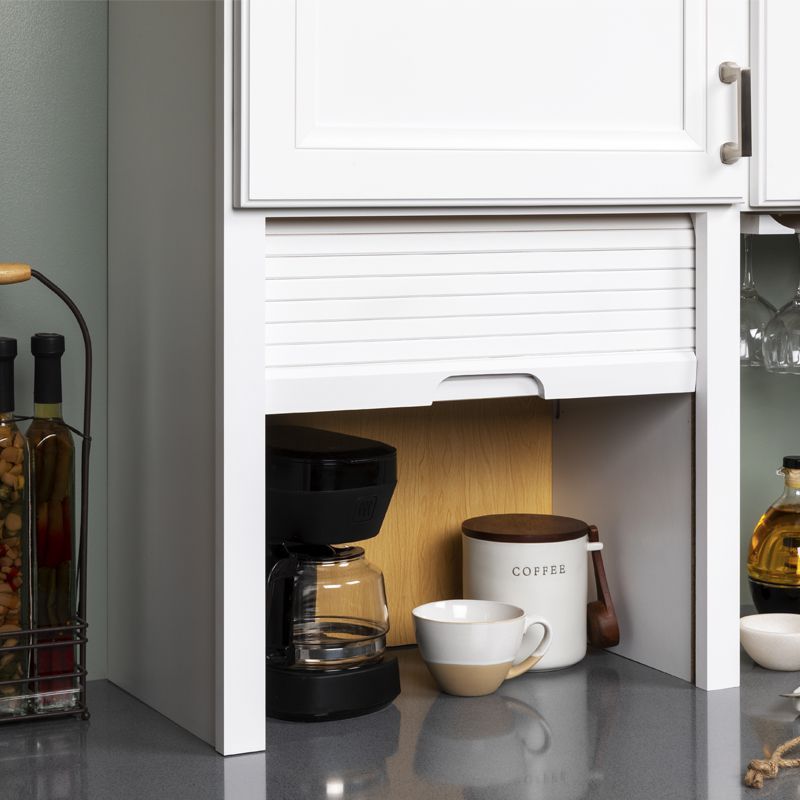
Remember those roll-top cabinets designed to hide toasters and coffee makers? Designers are increasingly steering clients away from these outdated storage solutions.
Awkward dimensions often can’t accommodate modern appliances, and the mechanical components frequently break down. The curved doors waste valuable space while collecting dust in hard-to-clean tracks.
18. Replace with: Appliance panels that blend seamlessly
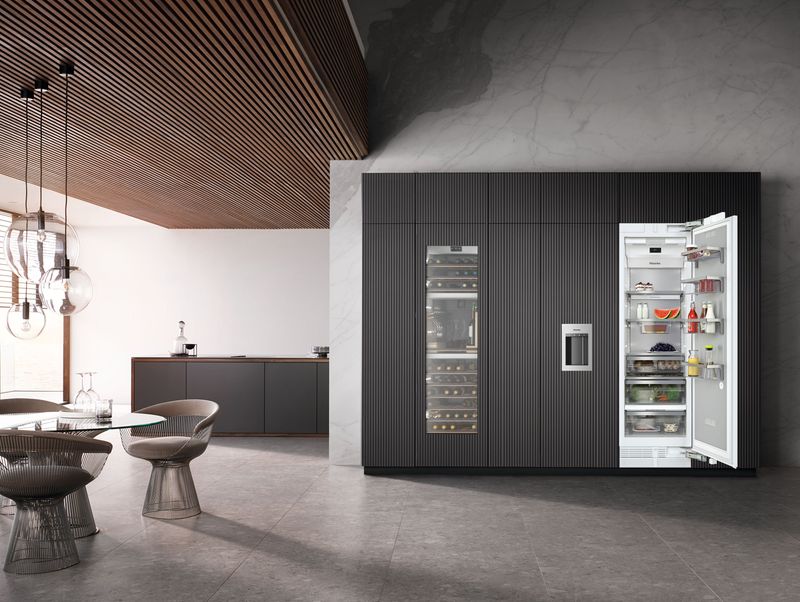
Disguising refrigerators and dishwashers behind cabinetry creates a cohesive, furniture-like appearance that elevates any kitchen. Without visual interruption from stainless steel, the space feels more streamlined and intentional.
Modern panel-ready appliances install flush with surrounding cabinets for a truly built-in look. For smaller appliances, consider dedicated interior storage with power outlets. Some designers incorporate retractable doors that slide into pockets rather than swinging outward.
19. Ditch: Tiny mosaic tile backsplashes
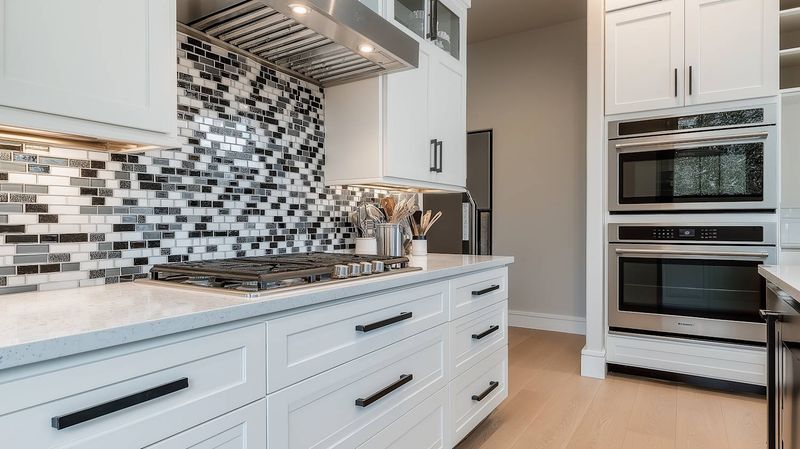
Small mosaic tiles create big cleaning headaches with their numerous grout lines. What once seemed like a splash of personality now reads as busy and dated to many design professionals.
Grout between tiny tiles quickly discolors from cooking splatters, requiring intense scrubbing. Intricate patterns often clash with other design elements rather than complementing them.
20. Replace with: Large-format slab or zellige tile backsplashes

Expansive porcelain slabs create dramatic, low-maintenance backsplashes with minimal grout lines to clean. Picture book-matched marble patterns flowing seamlessly behind your range – stunning!
Their slightly irregular surfaces create depth without the cleaning challenges of tiny mosaics. Both options provide visual impact while remaining practical for real-life cooking.



